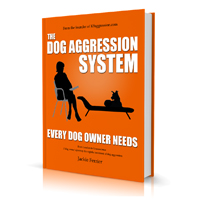Your cart is currently empty!
How to Recognize if Your Dog Likes Tummy Rubs

How to Recognize if Your Dog Likes Tummy Rubs, Petting (and Other Helpful Tips)!
Humans often misinterpret dog signals. We think a tail wag means a dog is happy, that all dogs love to be petted, or a dog rolling over on his back wants a tummy rub. Does your dog like belly rubs? Find out.

Relaxed dogs look loose and floppy
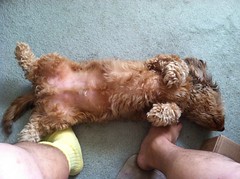
A lot can be determined by how tense the dog appears. In this photo, the dog is quite relaxed. Take note of his hind legs in particular. His legs are quite floppy, his tail looks relaxed. IN fact if you look at this photographers photo stream you can see a number of pictures of this same dog flopped out. He is completely comfortable.
Compare the previous dog with the next one.
Worried dogs hold themselves tight
Humans tend to look at faces to determine how someone is feeling. We have become highly tuned to recognize their feeling by our own mirror neurons. Sometimes a dog’s face is clearly showing he or she is uncomfortable. But more often than not we don’t see any signs there we recognize as stress.
Dogs express themselves through their body. Instead look at the body language. Look at the ear position, how they hold their head, what their tail is doing (contrary to popular believe not all tail wagging indicates a dog is happy!)
Compare your dog when you know he or she is relaxed. Dogs that are worried or stressed are not loose and floppy. Instead they are tight and hold themselves a little uncomfortably. Sometimes they move slowly. They may also look like they might be ready to move at any moment.

Some Signals Will be in Conflict
It’s not always easy to tell. Dogs often give conflicting signals. Usually this means that the dog is not entirely confident about what he is showing. It can also mean that the dog is in some conflict. He might want contact, but he might be anxious about it.
If your dog seems to be disengaging, or moving away, that it probably a signal. Stop touching your dog and see what they do. Do they paw you for more? Or do they relax when you stop or do they move away?
When in doubt, back off. It never hurts. When a dog really wants something from us, they are pretty good at letting us know.
Check out this great post by Paws 4 Dogs. Canine Body Language: Some Dogs Don’t Want Belly Rubs! There is a number of pictures showing dogs that like tummy rubs and dogs that don’t. Can you tell the difference? Check it out.
What Everyone Should Know about Petting Dog
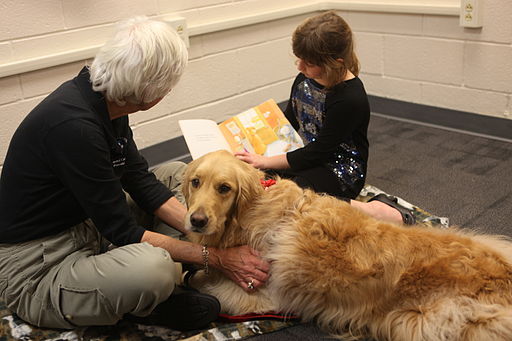
If we like dogs, we love to pet them. And we take it for granted that dogs like being petted, too. But contrary to popular opinion, many dogs don’t. Here is what you ought to know about petting dogs.
Petting can be beneficial
If you and your dog enjoy petting, you and your dog will start to produce oxytocin which is known as the “bonding” hormone. It is also produced when women give birth and breast feed and is considered one of the main reasons why new mothers bond with their babies and why cuddling couples feel closer. Research also suggests that oxytocin might beneficial for aggressive dogs because oxytocin makes us more trusting and less aggressive.
Petting can cause stress
Petting is not always beneficial. The reality is many dogs simply don’t enjoy it. Dogs that don’t enjoy it may simply tolerate, or give signals indicating they are stressed. The problem is we often miss these signs of stress.
It is not a black or white situation. Some may like it, but only for a short period of time. Others dogs only like it, but only from certain people. Rarely do dogs growl or bite unprovoked – we have simply missed the signals.
How to tell if your dog likes petting
So what can you do to determine if your dog, or any dog in fact enjoys the contact? The simple way is to do the “consent test”. This is a very simple practice of petting the dog for a moment and then backing off. Observe what the dog does in response. If the dog does nothing when you step back he or she probably doesn’t like it! You may be skeptical, but don’t dogs always make it clear when they want something?
More obvious signs that tell you the dog doesn’t like being petted:
- The dog turns his or her head away
- The dog even moves away.
- The dog licks their lips or flicks out their tongue
- The dog yawns
- The dog put their ears back
Signs that dogs that enjoy being petted:
- Nudge you for more.
- Try to put their head under your hand
- Paw you
- Look at you when you stop
- Lean into you
When dogs want something, they make it obvious. If you can’t tell, the dog might be unsure themselves. When in doubt let them come to you.
If you think your dog perhaps only tolerates petting (and is not aggressive to people in these conditions) try the consent test or ask guests to try it. Explain that your dog does not like being touched usually and this is like being a detective. Children in particular enjoy learning how to read the signals. Do the consent test from time to time during an interaction in case the dogs feelings have changed.
Dogs Facial Expressions Give Them Away
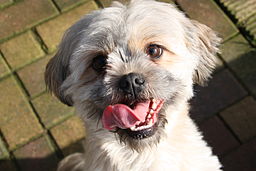
As dog owners, it is no surprise to us that a dog’s behavior changes according to the situation they are in. But researchers in Japan have discovered some subtleties in dogs’ facial expressions we may not know about. Using a high-speed camera to study the subtleties in 12 different dogs they learned that there is significant interaction between the social state and the facial part.
The experiment room was divided by a partian and the researchers used a black curtain to reveal the various people or objects behind it to the dog. The dog was then recorded responding.
They learned that the dogs’ facial expressions tend to change depending on what they are encountering and how they feel about it in very subtle, but consistent ways. Their fingings suggest that there may be a correlation between dogs’ facial expressions and the area of the brain responsible for emotions.
Dogs’ facial expressions vary according to what they encounter
The study revealed these results:
- Dogs’ eyebrows go up when they see people, but go up even more when they see their owners. Even more interesting it appears to be the left eyebrow that goes up in response to their owners. This occurs within a half a second. The researchers believe that that this suggests the dog’s attachment to their owner.
- Dogs’ left ear goes back when it’s a stranger. The ears do not appear to move in response to seeing their owners, however. The ear movement may indicate caution.
- If it is an object they don’t like, such as nail clippers their right ear goes back.
- Dogs’ ears do not go back when they see an object they would like to approach.
You can read more in the study Dogs show left facial lateralization upon reunion with their owners that is being published in this September’s Behavioural Processes

It is widely held by dog behavior experts that dogs’ facial expressions hold other secrets, too. For example, when a dog’s ears are pulled back, they are often afraid or anxious.
We can also see the whites of its eyes indicating he or she has not turned their head to look and this may indicate some stiffness in how they’re holding themselves.
When you see a combination or a sequence of signs such as tongue flicking or licking their nose, you can be a little more confident in guessing how the dog might be feeling.
The a still photograph doesn’t give us enough information because we don’t know if the dog is about to jump up or what else is going on. To fully assess we would also look at who or what the dog is interacting with and what is occurring around them.
But what we do know is that dogs don’t cover up how they feel. If they are giving conflicting signals, they’re probably experiencing conflict.
Dogs can be conflicted
However, when you see signs that are not congruent, the dog may be conflicted about how they feel. Or the context may indicate that the dog’s behavior is a result of something else (i.e. dogs will lick their noses in the presence of food).
Note that you will see the dogs tongue flicking or licking their noses in the video below. Given that there is no food around, it may indicate that the dogs feel some stress or worry. This may be because they are separated from whatever he or she sees. Or perhaps they are uncertain about what is expected from them when the person or object is revealed.
High Speed Camera Captures Dogs’ Expressions
Either way, check out some of the video footage shot with a high-speed camera in this article about how dogs use facial expressions. Although we don’t know what the dog is looking at, it is still quite amazing to see. Look at the variation in the dogs’ facial expressions, particularly with the Poodle subject. It makes you wonder what other signs are we missing!
http://www.dailymail.co.uk/sciencetech/article-2381526/Japanese-research-finds-dogs-use-facial-expressions-display-emotions.html#v-2576102296001
How understanding dog signalling can help improve dog aggression
There are two main ways that understanding dogs can help improve aggression.
- Knowing when a dog is starting to become irritated or anxious allows us to deal with the issue before it becomes a problem.
- Understanding when dogs want contact and when they don’t prevents unnecessary stress. A stressed dog is much more likely to behave aggressively.
- When we can help resolve problems for dogs, they in turn start to rely on us to do so instead of them having to resort to aggression to cope with a situation.
First photo by Grashoofd (Own work) [CC-BY-SA-3.0], via Wikimedia Commons
Second photo credit to [CC-BY-2.0], via Wikimedia Commons
ADVERTISEMENT
The Dog Aggression System Every Dog Owner Needs E-book
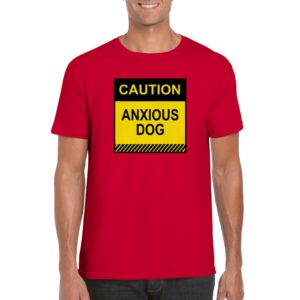
Anxious Dog Shirts only available in our shop
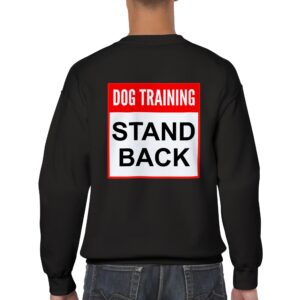
Keep people away with our Stand back shirts
ADVERTISEMENT
ADVERTISEMENT
Tags:

